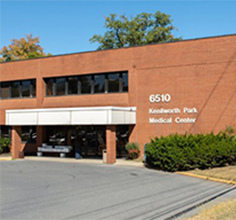
Whether it’s diagnosing a condition, explaining a treatment plan, or addressing patient concerns, every interaction can have a profound impact on outcomes. With the rise of digital technologies, healthcare communication has expanded far beyond face-to-face conversations. It now includes emails, telemedicine, patient portals, and even social media.
While these digital tools offer incredible benefits, they also come with unique challenges that healthcare providers must navigate. In this brief article brought to you by the primary care doctors Southern Maryland Medical Group, we offer some key communication strategies that healthcare providers can adopt to improve their effectiveness in the digital realm.
In digital communication, where there is no body language or facial expression to rely on, clarity becomes even more essential. Whether you’re sending an email, communicating through a patient portal, or engaging in a telemedicine consultation, focus on delivering clear, concise, and easy-to-understand information.
Use simple language when explaining a diagnosis or treatment plan. If you need to use medical terms, always provide a layperson’s definition. For example, instead of saying, “You have hypertension,” say, “You have high blood pressure, which means your heart is working harder than it should.”
Many patients struggle to fully grasp verbal explanations of conditions or procedures, and visuals can be a game-changer. Integrating visuals like diagrams, infographics, or short explainer videos into your digital communications can significantly improve understanding.
For instance, when explaining a complex condition such as diabetes, a visual chart showing how blood sugar levels fluctuate can help patients visualize the issue. In telehealth sessions, using screen-sharing tools to show images or walk through medical reports can bridge the gap between in-person consultations and virtual care.
Tone is notoriously hard to interpret in digital communication. What may seem like a straightforward message to you could come across as abrupt or insensitive to a patient, especially in emotionally charged situations. This is where empathy becomes crucial.
Whenever communicating via email, text, or even through online patient portals, be mindful of the emotional state of the patient. Small adjustments to your phrasing can make a world of difference. Instead of saying, “You missed your appointment,” say, “We noticed you weren’t able to make it to your appointment today. We hope everything is alright—would you like to reschedule?”
In telehealth sessions or online consultations, practicing active listening is especially valuable. It’s easy to be distracted in a virtual environment – whether it’s by technology or the absence of physical presence – but focusing on the patient and giving them your full attention can significantly improve the interaction.
Simple strategies like repeating back what the patient says (“So, what I’m hearing is…”) or acknowledging their concerns (“I can see why that would be worrying for you”) can validate their feelings and build trust, even over a digital screen.
In a world where many interactions are becoming automated, a personal touch can make all the difference. Address patients by their name, reference previous conversations or health concerns, and show empathy for their individual situations.
Personalized care fosters a stronger relationship and ensures patients don’t feel like they’re just another item on a list. It can also improve patient engagement, because individuals who feel seen and understood are more likely to follow through on treatment plans and maintain communication.
Whether you’re a primary care physician or staff, approaching digital communication with the same care, empathy, and attention to detail that you would in person can foster stronger patient relationships and improve health outcomes.
Southern Maryland Medical Group has 3 convenient locations to provide professional medical care services in the Southern Maryland area. Call or schedule an appointment with one of our locations to get medical care help.

5801 Allentown Road, Suite 400 Camp Spring, MD 20746
Phone: 301-868- 0150
Billing Inquiries: 301-552-1270
Fax: 301-868-0243

7500 Greenway Center, Dr #1200 Greenbelt, MD 20770
Phone: 301-486-7580
Billing Inquiries: 301-552-1270
Fax: 301-486-7581

6510 Kenilworth Ave, Ste 1400, Riverdale MD 20737
Phone: 301-618-0771
Billing Inquiries: 301-552-1270
Fax: 301-618-0772